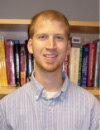 Darren Achey teaches Inorganic Chemistry and General Chemistry lecture and laboratory courses at Kutztown University in Pennsylvania. He received his B.S. Chemistry degree from Pennsylvania State University in 2008 and his Ph.D in Chemistry from Johns Hopkins University in 2013, where he studied the photophysical phenomena of transition metal complexes anchored to nanocrystalline titanium dioxide thin films with Dr. Gerald Meyer. His current research involves understanding how the physical properties of molecules in solution are altered when attached to nanomaterials. This understanding is crucial in the development and optimization of solar fuel generating devices as solid/molecular/solution interfaces are found in nearly all designs of such devices.
Darren Achey teaches Inorganic Chemistry and General Chemistry lecture and laboratory courses at Kutztown University in Pennsylvania. He received his B.S. Chemistry degree from Pennsylvania State University in 2008 and his Ph.D in Chemistry from Johns Hopkins University in 2013, where he studied the photophysical phenomena of transition metal complexes anchored to nanocrystalline titanium dioxide thin films with Dr. Gerald Meyer. His current research involves understanding how the physical properties of molecules in solution are altered when attached to nanomaterials. This understanding is crucial in the development and optimization of solar fuel generating devices as solid/molecular/solution interfaces are found in nearly all designs of such devices.
 Fabiola Barios-Landeros: I teach Organic Chemistry, Organometallic Chemistry and Frontiers of Science (core curriculum) at Yeshiva College, an orthodox Jewish institution in Manhattan, NY. I received my PhD from Yale University were I studied mechanisms of oxidative addition of palladium complexes under the mentorship of Prof. John Hartwig. I spent two years at the University of Basel in Switzerland investigating catalytic intermediates in the Iridium-catalyzed hydrogenation of imines with Prof. Andreas Pfaltz. I also spent a year at Columbia University as a teaching-postdoc. My current research focuses on using carboxylic acids as nucleophiles for the copper and palladium-catalyzed acyloxylation of aryl halides. I received my bachelors in chemistry from the National Autonomous University of Mexico.
Fabiola Barios-Landeros: I teach Organic Chemistry, Organometallic Chemistry and Frontiers of Science (core curriculum) at Yeshiva College, an orthodox Jewish institution in Manhattan, NY. I received my PhD from Yale University were I studied mechanisms of oxidative addition of palladium complexes under the mentorship of Prof. John Hartwig. I spent two years at the University of Basel in Switzerland investigating catalytic intermediates in the Iridium-catalyzed hydrogenation of imines with Prof. Andreas Pfaltz. I also spent a year at Columbia University as a teaching-postdoc. My current research focuses on using carboxylic acids as nucleophiles for the copper and palladium-catalyzed acyloxylation of aryl halides. I received my bachelors in chemistry from the National Autonomous University of Mexico.
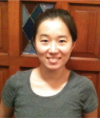 Keying Ding teaches Intermediate Inorganic Chemistry, Foundations of Inorganic Chemistry and General Chemistry courses at Middle Tennessee State University (MTSU) in Murfreesboro, Tennessee. She received her PhD from University of Rochester in 2009 where she studied the low-coordinate transitional metal complexes with β-diketiminate ligand with Dr. Patrick Holland. She spent two years at University of Minnesota (UMN) as a postdoc with Dr. Connie Lu, where she worked on design and synthesis of a new wide bite angle phosphine and its transition metal complexes with their novel reactivities for hydroformylation, hydrosilylation and hydrogenation. In 2011, she started postdoc with Dr. William Tolman and Dr. Marc Hillmyer at UMN, and she worked on a couple of projects including a) kinetics and mechanism study of ring opening polymerization of cyclic ester. b) homogeneous catalysis for biomass conversion to styrene using high-throughput catalyst screening technique. c) synthesis and characterization of bio-derived block copolymers as thermoplastic materials. In 2013, she started her faculty position at MTSU and her current research interests include (a) developing earth abundant transition metal catalysts for biomass conversion and (b) synthesis of organometallic complexes with bioactive molecules and their bioactivity studies.
Keying Ding teaches Intermediate Inorganic Chemistry, Foundations of Inorganic Chemistry and General Chemistry courses at Middle Tennessee State University (MTSU) in Murfreesboro, Tennessee. She received her PhD from University of Rochester in 2009 where she studied the low-coordinate transitional metal complexes with β-diketiminate ligand with Dr. Patrick Holland. She spent two years at University of Minnesota (UMN) as a postdoc with Dr. Connie Lu, where she worked on design and synthesis of a new wide bite angle phosphine and its transition metal complexes with their novel reactivities for hydroformylation, hydrosilylation and hydrogenation. In 2011, she started postdoc with Dr. William Tolman and Dr. Marc Hillmyer at UMN, and she worked on a couple of projects including a) kinetics and mechanism study of ring opening polymerization of cyclic ester. b) homogeneous catalysis for biomass conversion to styrene using high-throughput catalyst screening technique. c) synthesis and characterization of bio-derived block copolymers as thermoplastic materials. In 2013, she started her faculty position at MTSU and her current research interests include (a) developing earth abundant transition metal catalysts for biomass conversion and (b) synthesis of organometallic complexes with bioactive molecules and their bioactivity studies.
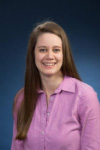 Kathleen Field is currently an ARL post-doctoral fellow in the Emmert lab at Worcester Polytechnic Institute where her main project is the selective extraction of rare earth elements. She received her B.S degree from Monmouth University in 2008 and her PhD from Rutgers University in 2014 under the direction of Professor Alan Goldman. During graduate school, her research project focused on the activation of small molecules using pincer iridium catalysts but Kathleen was also a coordinator for LEEDAR, a successful high school outreach program that encouraged students to design their own experiment.
Kathleen Field is currently an ARL post-doctoral fellow in the Emmert lab at Worcester Polytechnic Institute where her main project is the selective extraction of rare earth elements. She received her B.S degree from Monmouth University in 2008 and her PhD from Rutgers University in 2014 under the direction of Professor Alan Goldman. During graduate school, her research project focused on the activation of small molecules using pincer iridium catalysts but Kathleen was also a coordinator for LEEDAR, a successful high school outreach program that encouraged students to design their own experiment.
 Paul J. Fischer is a Professor of Chemistry at Macalester College in St. Paul, MN, where he has regularly taught general chemistry and advanced inorganic chemistry since 2001. Fischer earned his B.S. (1993) and Ph.D. (1998) degrees from the University of Minnesota where he conducted synthesis research targeting low valent titanium carbonyl complexes with John E. Ellis. Fischer's research group at Macalester targets low valent group VI complexes with promise for applications in organic synthesis; he has co-authored eight manuscripts with undergraduate co authors in Organometallics (7) and Dalton Transactions (1) since 2005. Fischer is co-author of Inorganic Chemistry, Fifth Edition (Pearson, 2014) joining the founding authors of this textbook, Gary L. Miessler and Donald A. Tarr (deceased).
Paul J. Fischer is a Professor of Chemistry at Macalester College in St. Paul, MN, where he has regularly taught general chemistry and advanced inorganic chemistry since 2001. Fischer earned his B.S. (1993) and Ph.D. (1998) degrees from the University of Minnesota where he conducted synthesis research targeting low valent titanium carbonyl complexes with John E. Ellis. Fischer's research group at Macalester targets low valent group VI complexes with promise for applications in organic synthesis; he has co-authored eight manuscripts with undergraduate co authors in Organometallics (7) and Dalton Transactions (1) since 2005. Fischer is co-author of Inorganic Chemistry, Fifth Edition (Pearson, 2014) joining the founding authors of this textbook, Gary L. Miessler and Donald A. Tarr (deceased).
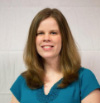 Sarah Goforth has just completed her first year as an Assistant Professor of Chemistry at Campbell University where she teaches lectures and labs for inorganic and organic chemistry. She received her Bachelor of Science degree in chemistry and mathematics from Furman University, and completed her graduate studies in inorganic chemistry at the University of Florida in the laboratory of Prof. Lisa McElwee-White. After receiving her PhD in 2013, she worked as a postdoctoral research associate in the laboratory of Prof. Brent Gunnoe at the University of Virginia.
Sarah Goforth has just completed her first year as an Assistant Professor of Chemistry at Campbell University where she teaches lectures and labs for inorganic and organic chemistry. She received her Bachelor of Science degree in chemistry and mathematics from Furman University, and completed her graduate studies in inorganic chemistry at the University of Florida in the laboratory of Prof. Lisa McElwee-White. After receiving her PhD in 2013, she worked as a postdoctoral research associate in the laboratory of Prof. Brent Gunnoe at the University of Virginia.
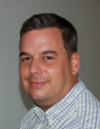 David S. Heroux is an Associate Professor at Saint Michael's College in Colchester, Vermont where he regularly teaches general and inorganic chemistry. He has also taught environmental chemistry and a course on nanotechnology for non-science majors. He received his Ph.D. in Inorganic Chemistry from Kansas State University studying novel methods of semiconductor nanoparticle synthesis. His current research involves the synthesis of metal oxide heterogeneous catalysts for the production of fuels from biomass. He recently spent a sabbatical year at the Colorado School of Mines working on a project with the National Renewable Energy Lab to upgrade pyrolysis vapors. Additionally, he has worked as a visiting scientist at the Boreskov Institute of Catalysis in Novosibirsk, Russia.
David S. Heroux is an Associate Professor at Saint Michael's College in Colchester, Vermont where he regularly teaches general and inorganic chemistry. He has also taught environmental chemistry and a course on nanotechnology for non-science majors. He received his Ph.D. in Inorganic Chemistry from Kansas State University studying novel methods of semiconductor nanoparticle synthesis. His current research involves the synthesis of metal oxide heterogeneous catalysts for the production of fuels from biomass. He recently spent a sabbatical year at the Colorado School of Mines working on a project with the National Renewable Energy Lab to upgrade pyrolysis vapors. Additionally, he has worked as a visiting scientist at the Boreskov Institute of Catalysis in Novosibirsk, Russia.
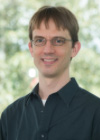 Kevin Hoke teaches general and inorganic chemistry at Berry College in Rome, Georgia. Following an undergraduate degree at Rice University, Kevin carried out his PhD thesis work on electron transfer in copper proteins at Caltech. His postdoctoral work at Oxford and Cornell utilized electrochemical methods to study catalysis in molybdoenzymes and electron exchange properties of cytochrome c. He has been working with undergraduate researchers at Berry since 2007 and his current research investigates ligand-switching behavior in mutants of cytochrome c and redox properties of the Rieske protein.
Kevin Hoke teaches general and inorganic chemistry at Berry College in Rome, Georgia. Following an undergraduate degree at Rice University, Kevin carried out his PhD thesis work on electron transfer in copper proteins at Caltech. His postdoctoral work at Oxford and Cornell utilized electrochemical methods to study catalysis in molybdoenzymes and electron exchange properties of cytochrome c. He has been working with undergraduate researchers at Berry since 2007 and his current research investigates ligand-switching behavior in mutants of cytochrome c and redox properties of the Rieske protein.
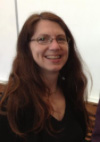 Karen McFarlane Holman teaches inorganic chemistry, the integrated lab series, and introductory chemistry at Willamette University, a liberal arts college in Salem, OR. She received her Ph.D. with Peter Ford at UCSB where she used laser flash photolysis with time-resolved infrared detection to investigate reactive intermediates relevant to migratory insertion reactions. She veered away from organometallic photochemistry when she joined Mel Klein and Vittal Yachandra as a postdoc at LBNL to study the oxygen-evolving complex in Photosystem II using EXAFS and XANES. When she joined the faculty at Willamette, she decided to return to studying chemical dynamics, and now she and her research students investigate fundamental reactions of ruthenium-based anti-cancer agents using VT-NMR, UV-Vis, and occasionally Raman and XANES. She also collaborates with biochemists to investigate the Ru-based drug interactions with RNA. In her spare time she plays guitar in a punk band and is a DJ on the local community radio station.
Karen McFarlane Holman teaches inorganic chemistry, the integrated lab series, and introductory chemistry at Willamette University, a liberal arts college in Salem, OR. She received her Ph.D. with Peter Ford at UCSB where she used laser flash photolysis with time-resolved infrared detection to investigate reactive intermediates relevant to migratory insertion reactions. She veered away from organometallic photochemistry when she joined Mel Klein and Vittal Yachandra as a postdoc at LBNL to study the oxygen-evolving complex in Photosystem II using EXAFS and XANES. When she joined the faculty at Willamette, she decided to return to studying chemical dynamics, and now she and her research students investigate fundamental reactions of ruthenium-based anti-cancer agents using VT-NMR, UV-Vis, and occasionally Raman and XANES. She also collaborates with biochemists to investigate the Ru-based drug interactions with RNA. In her spare time she plays guitar in a punk band and is a DJ on the local community radio station.
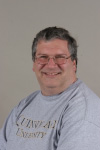 Jim Kirby teaches General and Inorganic Chemistry at Quinnipiac University. He received a BS in Chemistry from Trinity College in Hartford, CT, a M.Ed. in Instructional Learning from UMass-Amherst, and his Ph.D. in Inorganic Chemistry studying the redox properties of polyoxometalates under Dr. Louis C. W. Baker at Georgetown University. Jim covered a sabbatical leave at The College of William & Mary before a tenure-track position at Northwestern State University of Louisiana and his current position at Quinnipiac, where he has been since 1996. He continues research with students in polyoxometalate chemistry and focuses his educational research on automated response systems in the smaller sized class.
Jim Kirby teaches General and Inorganic Chemistry at Quinnipiac University. He received a BS in Chemistry from Trinity College in Hartford, CT, a M.Ed. in Instructional Learning from UMass-Amherst, and his Ph.D. in Inorganic Chemistry studying the redox properties of polyoxometalates under Dr. Louis C. W. Baker at Georgetown University. Jim covered a sabbatical leave at The College of William & Mary before a tenure-track position at Northwestern State University of Louisiana and his current position at Quinnipiac, where he has been since 1996. He continues research with students in polyoxometalate chemistry and focuses his educational research on automated response systems in the smaller sized class.
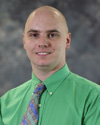 Keith Krise teaches general and inorganic chemistry lecture and laboratory courses at Gannon University in Erie, Pennsylvania. He earned a Ph.D. at the Pennsylvania State University, where he studied the effects of microviscosity, bound water and protein mobility on the radiolysis and sonolysis of hen albumen (a model system for mucous membranes). His current research focuses on the effects that high-frequency ultrasound have on the structure and function of enzymes and other bioorganic/bioinorganic molecules and nanomaterials.
Keith Krise teaches general and inorganic chemistry lecture and laboratory courses at Gannon University in Erie, Pennsylvania. He earned a Ph.D. at the Pennsylvania State University, where he studied the effects of microviscosity, bound water and protein mobility on the radiolysis and sonolysis of hen albumen (a model system for mucous membranes). His current research focuses on the effects that high-frequency ultrasound have on the structure and function of enzymes and other bioorganic/bioinorganic molecules and nanomaterials.
 Anna Larsen Anna Larsen is an Associate Professor and Chair of the Chemistry Department at Ithaca College, in Ithaca , NY. Anna graduated from Moscow State University (Russia) with B.S./M.S. degree in Physical Organic Chemistry and earned her Ph.D. degree in Organometallic chemistry from Utah State University. Anna completed two sets of postdoctoral studies: with Professor Chris Reed at the University of Southern California (and UC-Riverside) and with Professor Jim Mayer at the University of Washington. Anna also served as a visiting Assistant Professor at Seattle University in 2001. In 2003 Anna joined Ithaca College Department of Chemistry and Biochemistry in the position of Assistant Professor, where she got tenured and promoted to Associate Professor rank in 2009. During her sabbatical leave in 2010-2011 academic year Anna was a Fulbright Scholar at La Universidad de Buenos Aires in Argentina and a Visiting Researcher at the Imperial College in London, UK. At IC Anna teaches General Chemistry to science and non-science majors, as well as Inorganic and Organometallic Chemistry lecture and laboratory courses for junior and senior chemistry and biochemistry majors (including senior electives). Anna is interested in developing visual aids for teaching and understanding Molecular Orbital Theory and other complex topics of inorganic chemistry. Annas’ research group is pursuing research projects in the following areas: development of low melting ionic materials with carborane cluster anions; transition metal electrophilic complexes with weakly-coordinating carborane anions; rhodium pincer complexes in alkyne polymerization catalysis.
Anna Larsen Anna Larsen is an Associate Professor and Chair of the Chemistry Department at Ithaca College, in Ithaca , NY. Anna graduated from Moscow State University (Russia) with B.S./M.S. degree in Physical Organic Chemistry and earned her Ph.D. degree in Organometallic chemistry from Utah State University. Anna completed two sets of postdoctoral studies: with Professor Chris Reed at the University of Southern California (and UC-Riverside) and with Professor Jim Mayer at the University of Washington. Anna also served as a visiting Assistant Professor at Seattle University in 2001. In 2003 Anna joined Ithaca College Department of Chemistry and Biochemistry in the position of Assistant Professor, where she got tenured and promoted to Associate Professor rank in 2009. During her sabbatical leave in 2010-2011 academic year Anna was a Fulbright Scholar at La Universidad de Buenos Aires in Argentina and a Visiting Researcher at the Imperial College in London, UK. At IC Anna teaches General Chemistry to science and non-science majors, as well as Inorganic and Organometallic Chemistry lecture and laboratory courses for junior and senior chemistry and biochemistry majors (including senior electives). Anna is interested in developing visual aids for teaching and understanding Molecular Orbital Theory and other complex topics of inorganic chemistry. Annas’ research group is pursuing research projects in the following areas: development of low melting ionic materials with carborane cluster anions; transition metal electrophilic complexes with weakly-coordinating carborane anions; rhodium pincer complexes in alkyne polymerization catalysis.
 David A. Laviska has held Visiting Assistant Professor appointments at The College of New Jersey in Ewing, NJ and Lafayette College in Easton, PA. He received his B.A. in chemistry from Cornell University (1989) and M.S. with concentration in inorganic chemistry from the University of Washington (1991) before pursuing a career in the field of environmental science. After working for nearly ten years as a contractor with the U.S. EPA, he returned to graduate studies at Rutgers University and completed his Ph.D. in organometallic chemistry in 2013. His doctoral research was conducted under the guidance of Alan S. Goldman and focused on the activation and transformation of C-H and other strong bonds utilizing iridium pincer complexes. He currently holds a Visiting Scientist appointment at Rutgers, where he continues research on iridium complexes. In addition, he has initiated independent research with undergraduate students at TCNJ, most notably on activation of N-H bonds and dehydrogenation of primary amines.
David A. Laviska has held Visiting Assistant Professor appointments at The College of New Jersey in Ewing, NJ and Lafayette College in Easton, PA. He received his B.A. in chemistry from Cornell University (1989) and M.S. with concentration in inorganic chemistry from the University of Washington (1991) before pursuing a career in the field of environmental science. After working for nearly ten years as a contractor with the U.S. EPA, he returned to graduate studies at Rutgers University and completed his Ph.D. in organometallic chemistry in 2013. His doctoral research was conducted under the guidance of Alan S. Goldman and focused on the activation and transformation of C-H and other strong bonds utilizing iridium pincer complexes. He currently holds a Visiting Scientist appointment at Rutgers, where he continues research on iridium complexes. In addition, he has initiated independent research with undergraduate students at TCNJ, most notably on activation of N-H bonds and dehydrogenation of primary amines.
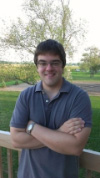 Richard Lord teaches general and inorganic chemistry at Grand Valley State University in Allendale, MI. He earned a Ph.D. in inorganic chemistry at Indiana University studying spin-crossover and multielectron transfer reactions using computational chemistry before moving to Wayne State University to study the excited states of Ru polypyridyl complexes and polyphenolate transition-metal catalysts. His undergraduates currently work on: (i) small molecule activation/catalysis using transition- and main-group metals and (ii) the use of redox-active ligands in redox chemistry.
Richard Lord teaches general and inorganic chemistry at Grand Valley State University in Allendale, MI. He earned a Ph.D. in inorganic chemistry at Indiana University studying spin-crossover and multielectron transfer reactions using computational chemistry before moving to Wayne State University to study the excited states of Ru polypyridyl complexes and polyphenolate transition-metal catalysts. His undergraduates currently work on: (i) small molecule activation/catalysis using transition- and main-group metals and (ii) the use of redox-active ligands in redox chemistry.
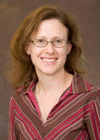 Vanessa McCaffrey teaches inorganic, organic, and general chemistry at Albion College in Albion, Michigan. She also teaches an Honors Class on the Nobel Prize in the Sciences. She completed her Ph.D. at the University of North Carolina at Chapel Hill where she worked with Prof. Malcolm D. E. Forbes on the photolysis of acrylic polymers. Her current research interests include the synthesis of dioxovanadium complexes for use in cytotoxicity studies and work on the impact chemistry of small molecules relating to the Origins of Life.
Vanessa McCaffrey teaches inorganic, organic, and general chemistry at Albion College in Albion, Michigan. She also teaches an Honors Class on the Nobel Prize in the Sciences. She completed her Ph.D. at the University of North Carolina at Chapel Hill where she worked with Prof. Malcolm D. E. Forbes on the photolysis of acrylic polymers. Her current research interests include the synthesis of dioxovanadium complexes for use in cytotoxicity studies and work on the impact chemistry of small molecules relating to the Origins of Life.
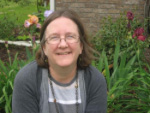 Christina (Tina) McCartha teaches inorganic chemistry, structural organic chemistry, freshmen inquiry, and environmental chemistry at Newberry College in South Carolina. She is the departmental faculty advisor for transfer students, faculty co-advisor for Newberry College Chapter of the American Chemical Society, and chair of the Department of Sciences and Mathematics. She received her undergraduate degree from University of South Carolina and her graduate degree and postdoctoral studies from Emory University. Her research focused on polyoxometalate catalysis.
Christina (Tina) McCartha teaches inorganic chemistry, structural organic chemistry, freshmen inquiry, and environmental chemistry at Newberry College in South Carolina. She is the departmental faculty advisor for transfer students, faculty co-advisor for Newberry College Chapter of the American Chemical Society, and chair of the Department of Sciences and Mathematics. She received her undergraduate degree from University of South Carolina and her graduate degree and postdoctoral studies from Emory University. Her research focused on polyoxometalate catalysis.
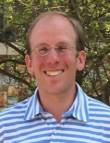 John Miecznikowski teaches General Chemistry I and II, General Chemistry II Laboratory, Advanced Inorganic Chemistry Lecture and Laboratory, Chemical Analysis lecture, and Introduction to Forensic Science (for non-science majors) at Fairfield University (Fairfield, CT). He received his B.S. Degree in Chemistry from Trinity College (Hartford, CT) and he received his Ph.D. Degree from Yale University (New Haven, CT) where he was mentored by Robert Crabtree. At Yale, he synthesized and characterized bis-N-heterocyclic carbene complexes containing Pd(II), Ir(III), or Rh(III) metal centers. In addition, he screened these metal complexes for carbon-carbon bond forming reactivity, and hydrogen transfer activity for the reduction of aldehydes and imines. After completing his Ph.D., he completed a post-doctoral faculty fellowship at Boston University (Boston, MA) where he taught General Chemistry I and Inorganic Chemistry lecture and laboratory and performed research under the direct mentorship of John Caradonna. He started as an Assistant Professor of Chemistry at Fairfield University in September 2007 and was tenured and promoted to Associate Professor of Chemistry in 2013. His independent research efforts have focused on preparing and characterizing Zn(II), Cu(I) and Cu(II) complexes that contain a tridentate pincer ligand with sulfur, nitrogen, and sulfur donor atoms. He has screened the Zn(II) complexes for the reduction of aldehydes and the Cu(I) and Cu(II) complexes for oxygen-atom transfer reactions. He is currently synthesizing and characterizing water-soluble tridentate pincer ligands with sulfur, nitrogen, and sulfur donor atoms and metalating the ligand precursors with Zn(II) or Cu(II) salts to form Zn(II) or Cu(II) complexes. He has mentored and directly supervised 23 Fairfield University undergraduate students in laboratory research projects. He enjoys playing golf when the weather permits in Connecticut.
John Miecznikowski teaches General Chemistry I and II, General Chemistry II Laboratory, Advanced Inorganic Chemistry Lecture and Laboratory, Chemical Analysis lecture, and Introduction to Forensic Science (for non-science majors) at Fairfield University (Fairfield, CT). He received his B.S. Degree in Chemistry from Trinity College (Hartford, CT) and he received his Ph.D. Degree from Yale University (New Haven, CT) where he was mentored by Robert Crabtree. At Yale, he synthesized and characterized bis-N-heterocyclic carbene complexes containing Pd(II), Ir(III), or Rh(III) metal centers. In addition, he screened these metal complexes for carbon-carbon bond forming reactivity, and hydrogen transfer activity for the reduction of aldehydes and imines. After completing his Ph.D., he completed a post-doctoral faculty fellowship at Boston University (Boston, MA) where he taught General Chemistry I and Inorganic Chemistry lecture and laboratory and performed research under the direct mentorship of John Caradonna. He started as an Assistant Professor of Chemistry at Fairfield University in September 2007 and was tenured and promoted to Associate Professor of Chemistry in 2013. His independent research efforts have focused on preparing and characterizing Zn(II), Cu(I) and Cu(II) complexes that contain a tridentate pincer ligand with sulfur, nitrogen, and sulfur donor atoms. He has screened the Zn(II) complexes for the reduction of aldehydes and the Cu(I) and Cu(II) complexes for oxygen-atom transfer reactions. He is currently synthesizing and characterizing water-soluble tridentate pincer ligands with sulfur, nitrogen, and sulfur donor atoms and metalating the ligand precursors with Zn(II) or Cu(II) salts to form Zn(II) or Cu(II) complexes. He has mentored and directly supervised 23 Fairfield University undergraduate students in laboratory research projects. He enjoys playing golf when the weather permits in Connecticut.
 Mike Norris is a postdoctoral research associate at the University of Washington under the direction of Brandi Cossairt. He is currently working on the design and synthesis of multi-metallic catalysts for CO2 reduction based on phosphine-carbene ligand frameworks. Mike received his B.S. from Ursinus College in Pennsylvania (2008) and his Ph.D. in Inorganic Chemistry from the University of North Carolina at Chapel Hill (2013). At UNC Mike worked with Profs. Thomas Meyer and Joseph Templeton on the synthesis, spectroscopy, and electrochemistry of Ru polypyridyl complexes for light-driven water oxidation.
Mike Norris is a postdoctoral research associate at the University of Washington under the direction of Brandi Cossairt. He is currently working on the design and synthesis of multi-metallic catalysts for CO2 reduction based on phosphine-carbene ligand frameworks. Mike received his B.S. from Ursinus College in Pennsylvania (2008) and his Ph.D. in Inorganic Chemistry from the University of North Carolina at Chapel Hill (2013). At UNC Mike worked with Profs. Thomas Meyer and Joseph Templeton on the synthesis, spectroscopy, and electrochemistry of Ru polypyridyl complexes for light-driven water oxidation.
 Kate Plass completed her undergraduate work at Wayne State University, her doctorate in materials chemistry at the University of Michigan, and postdoctoral work at the California Institute of Technology. She has been a professor at Franklin & Marshall College since 2008, where she teaches general and inorganic chemistry lectures and labs as well as specialized classes in materials chemistry. Her research focuses on synthesis and phase-control of metal chalcogenide nanoparticles.
Kate Plass completed her undergraduate work at Wayne State University, her doctorate in materials chemistry at the University of Michigan, and postdoctoral work at the California Institute of Technology. She has been a professor at Franklin & Marshall College since 2008, where she teaches general and inorganic chemistry lectures and labs as well as specialized classes in materials chemistry. Her research focuses on synthesis and phase-control of metal chalcogenide nanoparticles.
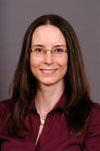 Sarah St. Angelo is currently at Dickinson College in Carlisle, Pennsylvania, where she regularly teaches inorganic chemistry, thermodynamics & kinetics, general chemistry, and courses in nanotechnology. Inorganic chemistry is designated as a writing intensive course at Dickinson, and several of her other courses are either officially or unofficially writing intensive. Her research with undergraduate students at Dickinson includes the synthesis and characterization of ultrasmall copper nanoparticles that she plans to investigate as catalysts. She attended Denison University, where she earned a B.S. in chemistry with a double major in English literature, and Penn State University, where she earned a Ph.D. in chemistry with a focus on synthesis, surface interactions, and self-assembly of nanoparticles.
Sarah St. Angelo is currently at Dickinson College in Carlisle, Pennsylvania, where she regularly teaches inorganic chemistry, thermodynamics & kinetics, general chemistry, and courses in nanotechnology. Inorganic chemistry is designated as a writing intensive course at Dickinson, and several of her other courses are either officially or unofficially writing intensive. Her research with undergraduate students at Dickinson includes the synthesis and characterization of ultrasmall copper nanoparticles that she plans to investigate as catalysts. She attended Denison University, where she earned a B.S. in chemistry with a double major in English literature, and Penn State University, where she earned a Ph.D. in chemistry with a focus on synthesis, surface interactions, and self-assembly of nanoparticles.
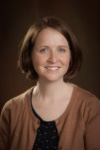 Ellen Steinmiller is currently an Assistant Professor of Chemistry at the University of Dallas, a liberal arts college in Irving, TX. At UD, she teaches Analytical, Inorganic, Instrumental Analysis, and the core physical science class for non-science majors. She received her BS in chemistry from the University of Arkansas and completed her graduate work at Purdue University with Kyoung-Shin Choi. After receiving her PhD in 2009, she worked as a postdoctoral research associate with Sara Skrabalak at Indiana University. Her research focus is on designing architecturally interesting metal oxide materials for photocatalysis.
Ellen Steinmiller is currently an Assistant Professor of Chemistry at the University of Dallas, a liberal arts college in Irving, TX. At UD, she teaches Analytical, Inorganic, Instrumental Analysis, and the core physical science class for non-science majors. She received her BS in chemistry from the University of Arkansas and completed her graduate work at Purdue University with Kyoung-Shin Choi. After receiving her PhD in 2009, she worked as a postdoctoral research associate with Sara Skrabalak at Indiana University. Her research focus is on designing architecturally interesting metal oxide materials for photocatalysis.